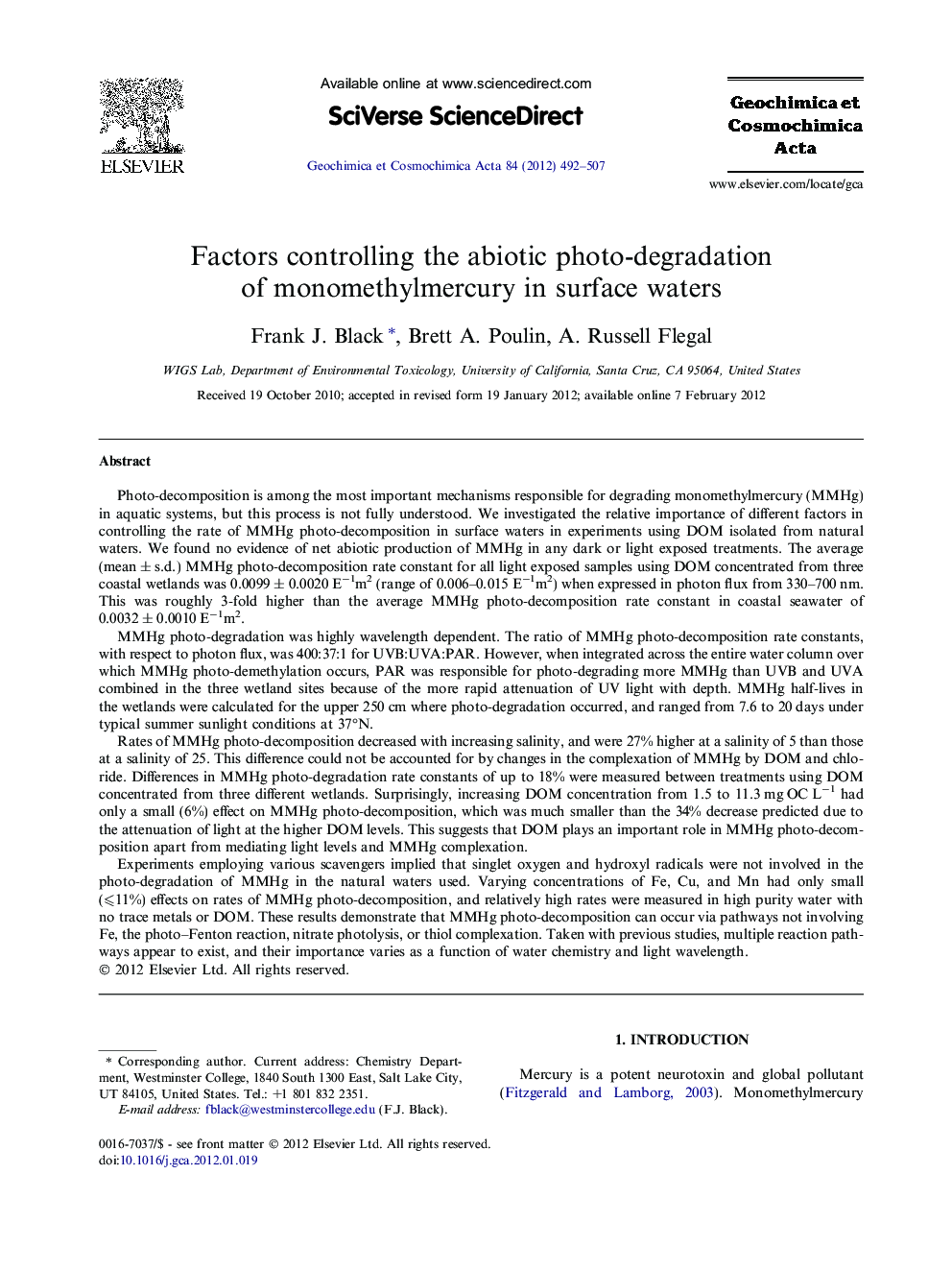| کد مقاله | کد نشریه | سال انتشار | مقاله انگلیسی | نسخه تمام متن |
|---|---|---|---|---|
| 4702960 | 1638073 | 2012 | 16 صفحه PDF | دانلود رایگان |

Photo-decomposition is among the most important mechanisms responsible for degrading monomethylmercury (MMHg) in aquatic systems, but this process is not fully understood. We investigated the relative importance of different factors in controlling the rate of MMHg photo-decomposition in surface waters in experiments using DOM isolated from natural waters. We found no evidence of net abiotic production of MMHg in any dark or light exposed treatments. The average (mean ± s.d.) MMHg photo-decomposition rate constant for all light exposed samples using DOM concentrated from three coastal wetlands was 0.0099 ± 0.0020 E−1m2 (range of 0.006–0.015 E−1m2) when expressed in photon flux from 330–700 nm. This was roughly 3-fold higher than the average MMHg photo-decomposition rate constant in coastal seawater of 0.0032 ± 0.0010 E−1m2.MMHg photo-degradation was highly wavelength dependent. The ratio of MMHg photo-decomposition rate constants, with respect to photon flux, was 400:37:1 for UVB:UVA:PAR. However, when integrated across the entire water column over which MMHg photo-demethylation occurs, PAR was responsible for photo-degrading more MMHg than UVB and UVA combined in the three wetland sites because of the more rapid attenuation of UV light with depth. MMHg half-lives in the wetlands were calculated for the upper 250 cm where photo-degradation occurred, and ranged from 7.6 to 20 days under typical summer sunlight conditions at 37°N.Rates of MMHg photo-decomposition decreased with increasing salinity, and were 27% higher at a salinity of 5 than those at a salinity of 25. This difference could not be accounted for by changes in the complexation of MMHg by DOM and chloride. Differences in MMHg photo-degradation rate constants of up to 18% were measured between treatments using DOM concentrated from three different wetlands. Surprisingly, increasing DOM concentration from 1.5 to 11.3 mg OC L−1 had only a small (6%) effect on MMHg photo-decomposition, which was much smaller than the 34% decrease predicted due to the attenuation of light at the higher DOM levels. This suggests that DOM plays an important role in MMHg photo-decomposition apart from mediating light levels and MMHg complexation.Experiments employing various scavengers implied that singlet oxygen and hydroxyl radicals were not involved in the photo-degradation of MMHg in the natural waters used. Varying concentrations of Fe, Cu, and Mn had only small (⩽11%) effects on rates of MMHg photo-decomposition, and relatively high rates were measured in high purity water with no trace metals or DOM. These results demonstrate that MMHg photo-decomposition can occur via pathways not involving Fe, the photo–Fenton reaction, nitrate photolysis, or thiol complexation. Taken with previous studies, multiple reaction pathways appear to exist, and their importance varies as a function of water chemistry and light wavelength.
Journal: Geochimica et Cosmochimica Acta - Volume 84, 1 May 2012, Pages 492–507